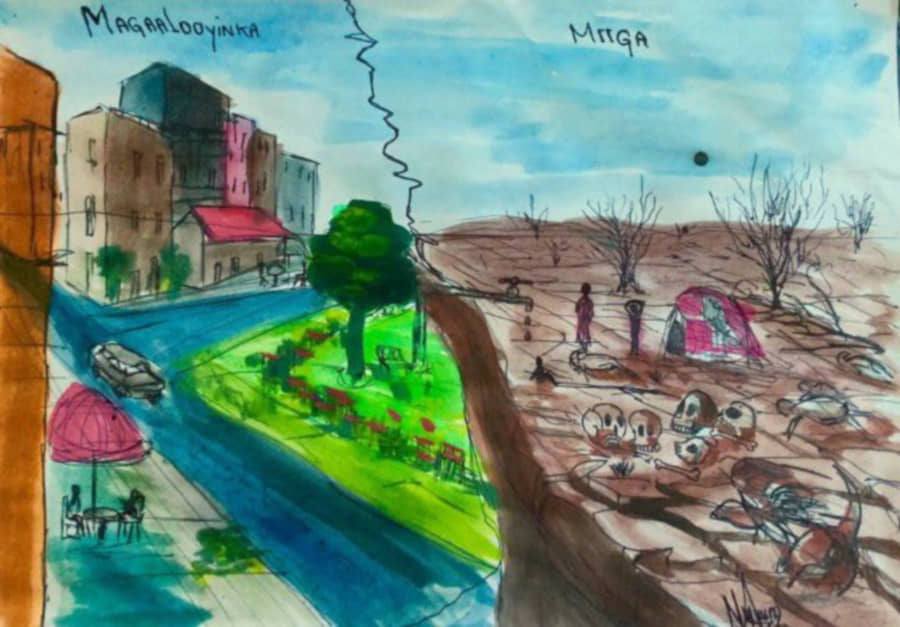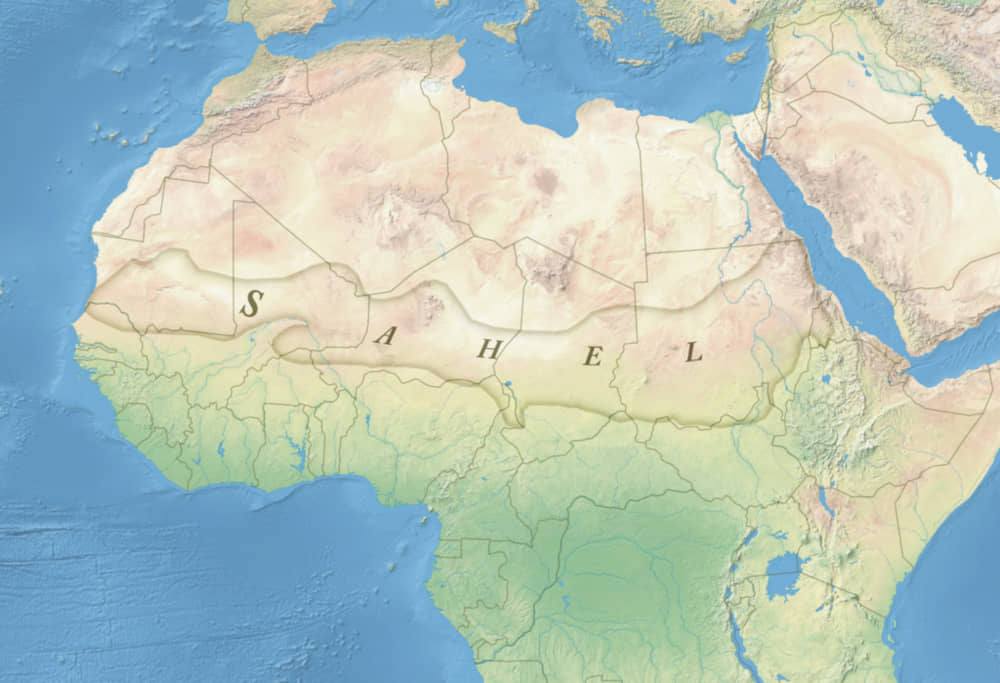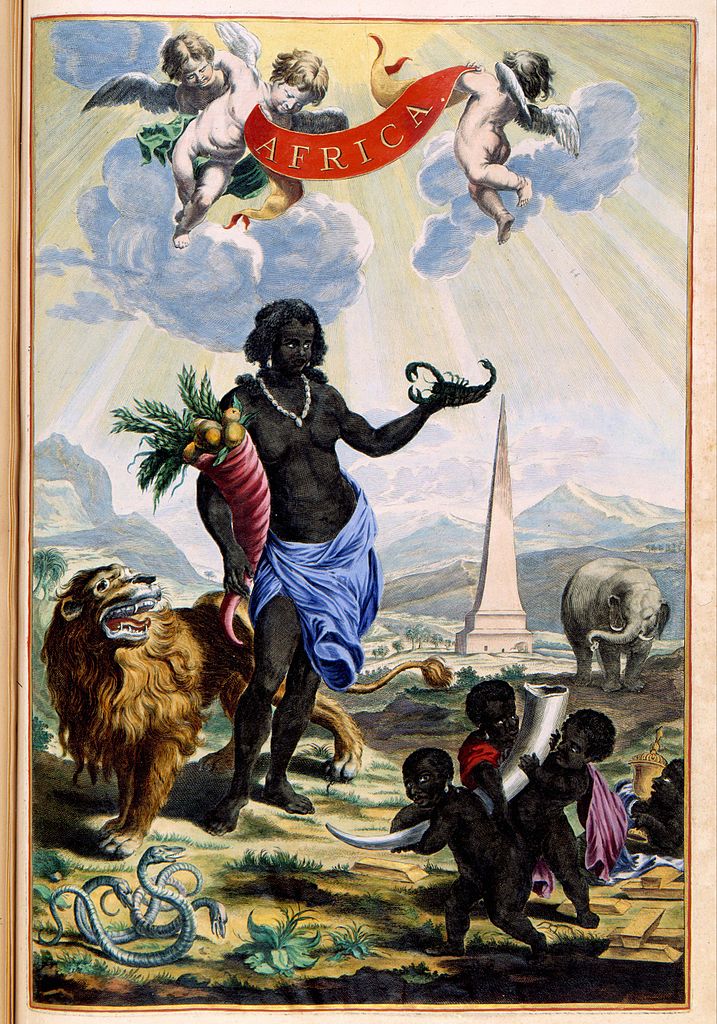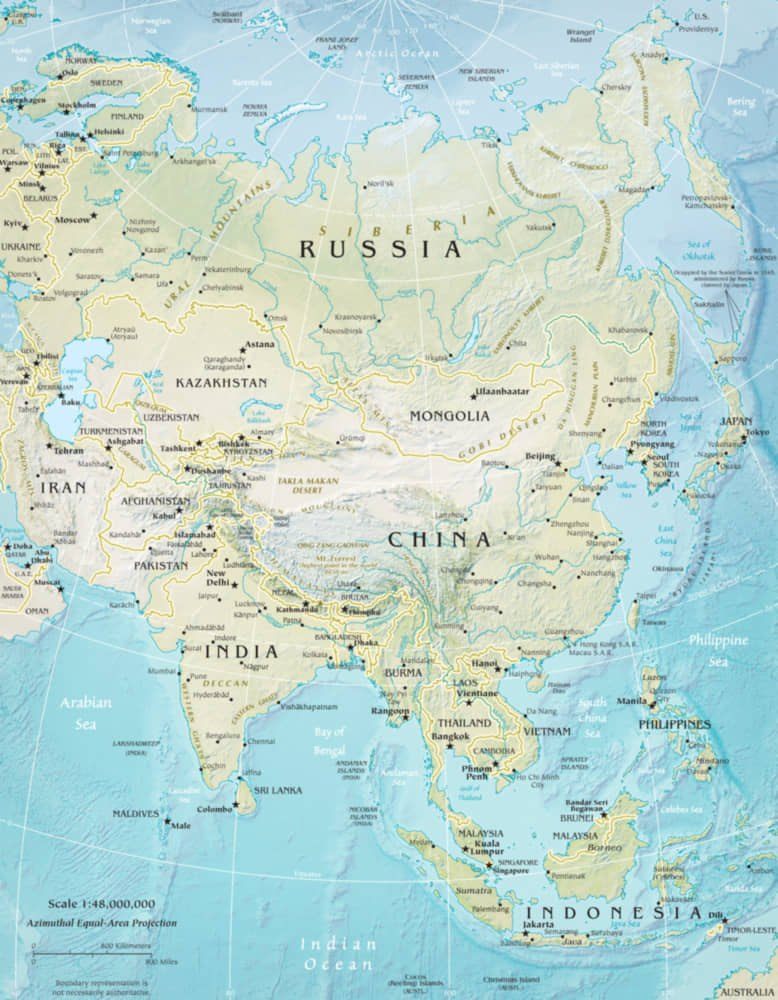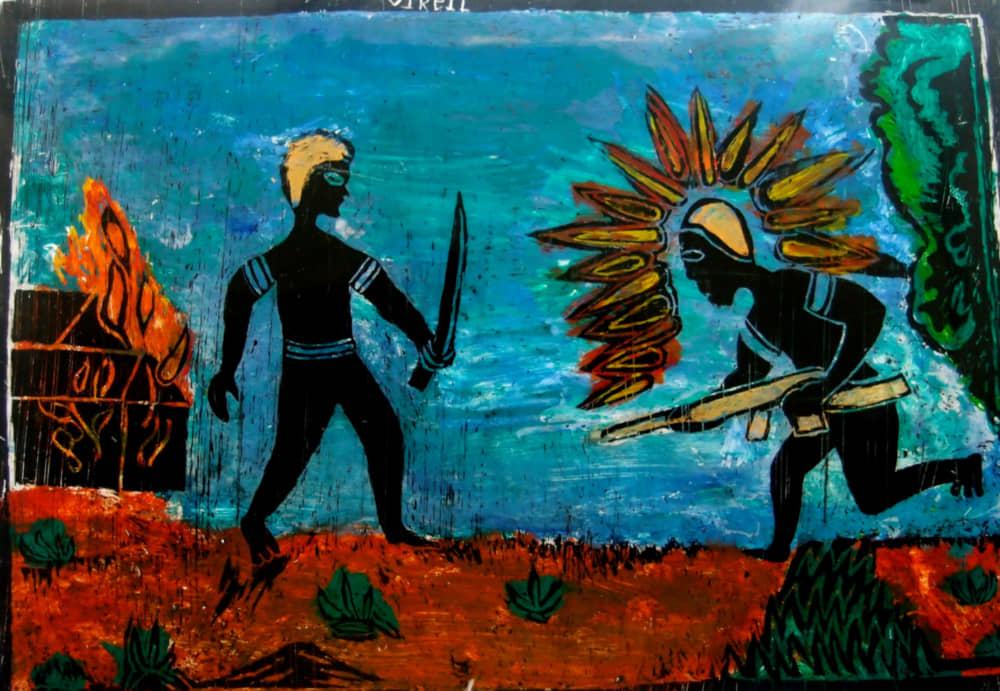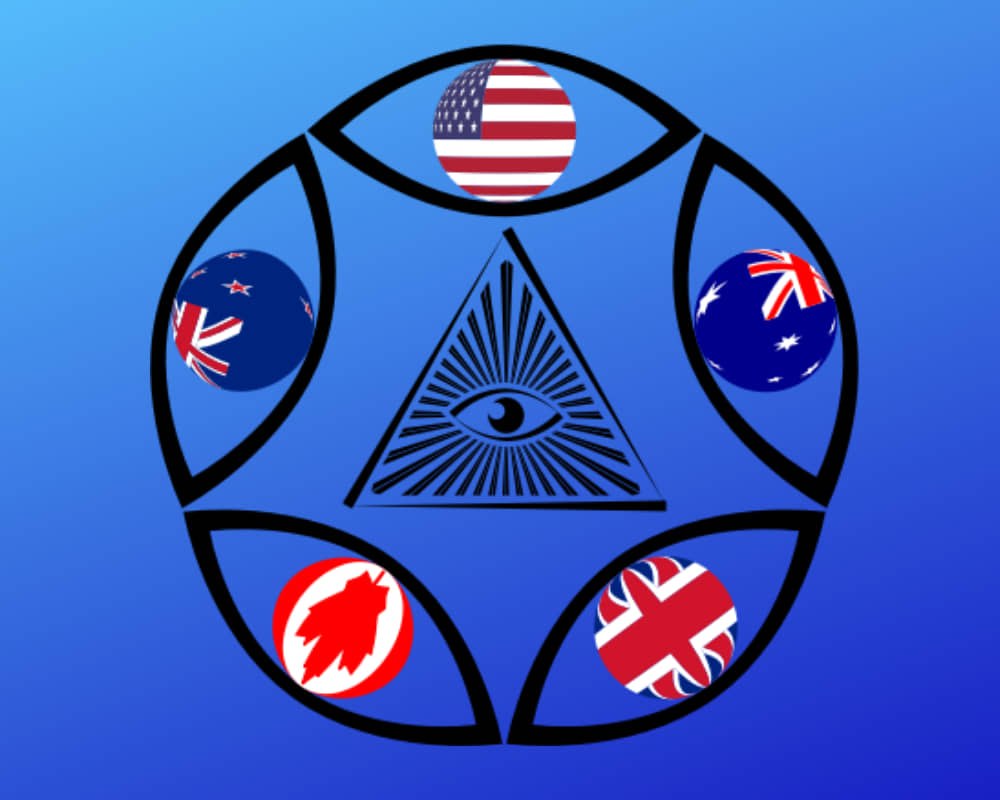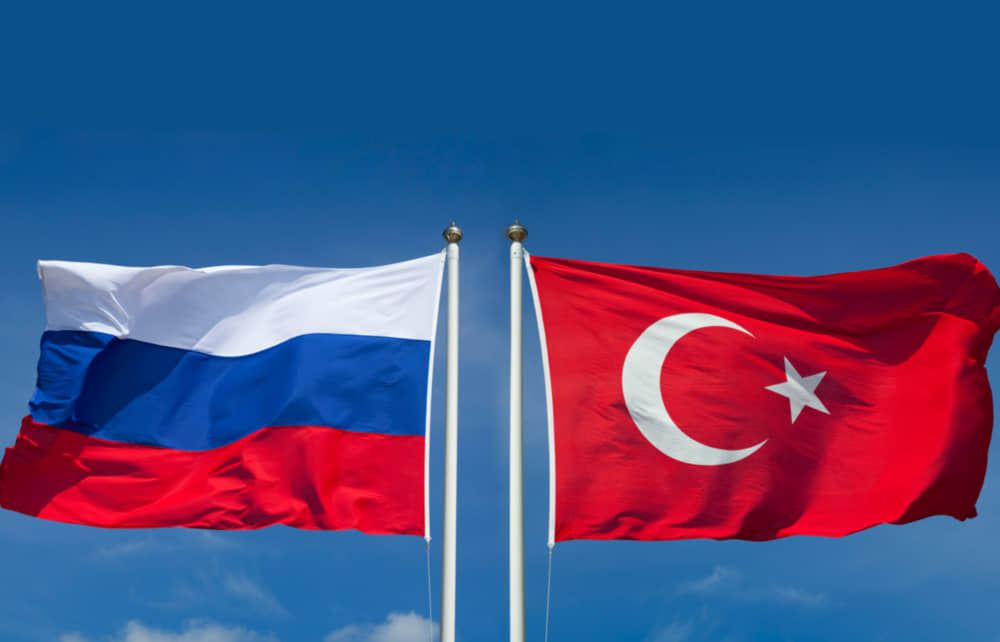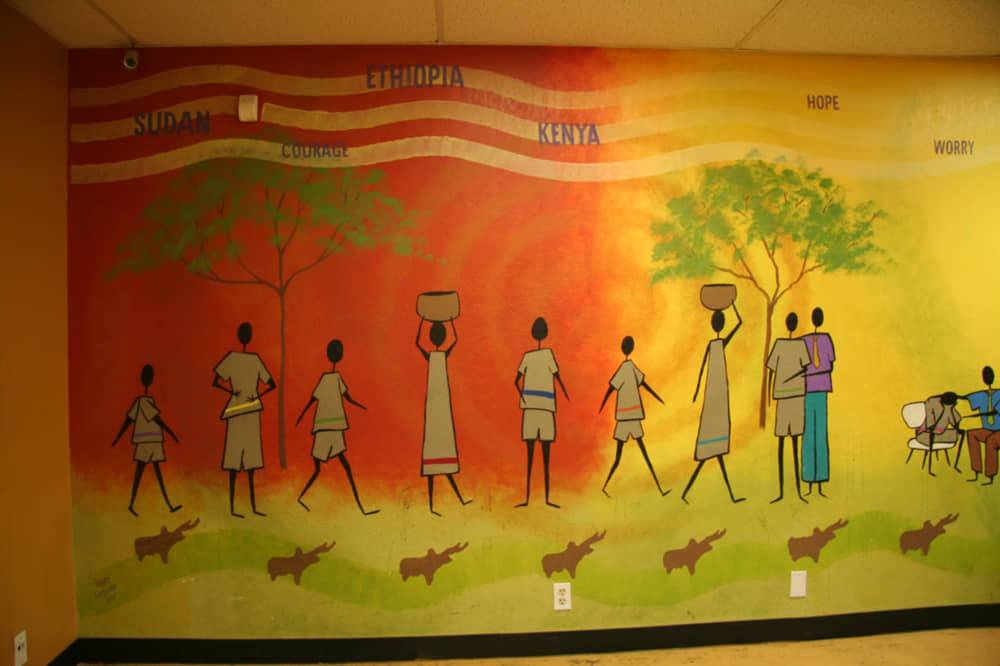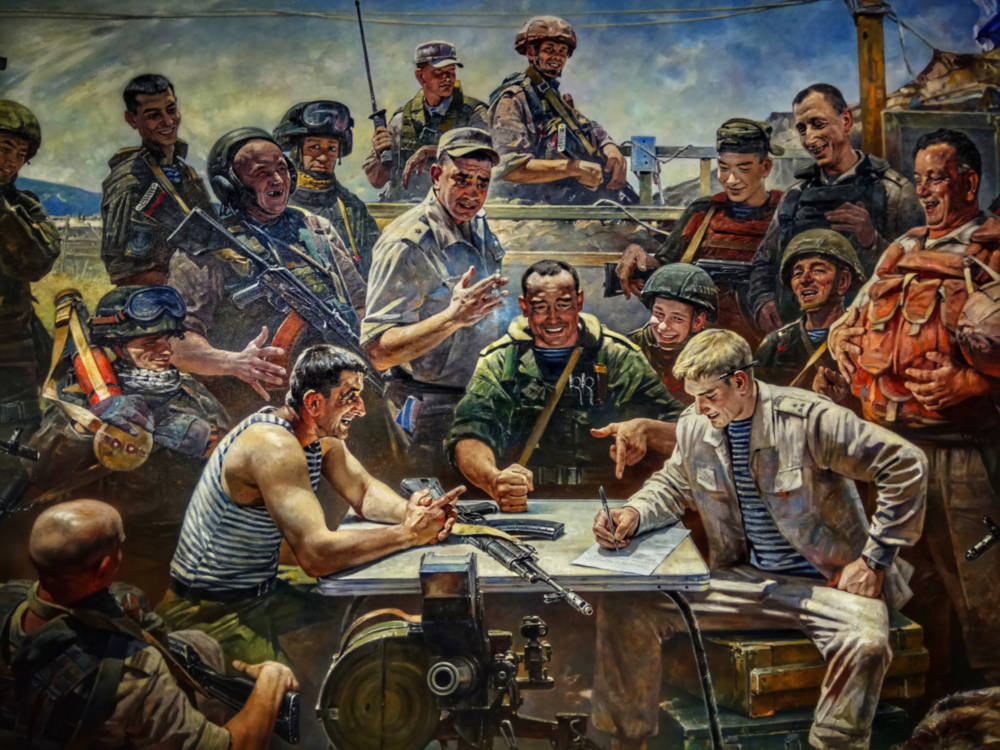While all the world is focused on the Russian-Ukrainian war in Ukraine and terrible consequences, calling attention to other regional conflicts might seem diversionary, or even offensive. But the world is a complex and cruel landscape, involving international dynamics and various interest groups which affect the lives of people.
Thus, it is useful to look at the Southern “near abroad” of EU and NATO blocks, where dynamics risk to impact (seriously), with implications for the security of Western states, including military threats, migrations routes, and the energy landscape.
Nine years after the French intervention in Mali, violent extremism continues to spread in the Sahel, showing remarkable resilience, despite efforts to prevent and combat radicalism by local governments and international actors. Jihadism, which seemed to be limited to northern Mali a few years ago, now extends to 75% of its territory, in addition to affecting Burkina Faso and Niger, with an increase, in the Sahel as a whole, of 70% in the number of jihadist actions; and with Burkina Faso in the focus for now, with dangerous and worrying intrusion into Western Guinea Gulf subregion states.
The complicated situation in which the Sahel finds itself, at a time when Operation “Barkhane” is being called to come to an end in 2022, in favour of a new, more modest military deployment, has brough into play various questions about the future of security in the region, where there are emerging more and more problems challenging the confrontation between the Euro-Atlantic economic and security architectures and Russia in primis (and China in the shadows).
Further, to complicate the matter, analysis, approaches, and management, as a caveat, when mentioning the Euro-Atlantic economic and security architectures, there are various imprecisions, given the divergent agendas and erratic priorities of some partners of these coalitions, like Turkey, or strong national interests, like France (reinforced by an exclusive colonial dominance, established in the region in the second half of the 19th century and which ended in the 1960s; and it should be remembered that since those years, French forces have carried out in Africa at least 50 operations, without considering the secret ones, as secrets, are not recorded).
The Current Stage
What will be the consequences of the end of Operation “Barkhane” on regional security? To what extent can regional governments and, more specifically the juntas that govern Mali, Burkina Faso, and Guinea (and in a limited extent, also Chad) respond to the articulated security challenges? What alternatives or possible solutions meet the growing regional deterioration, at a time when new external stakeholders, such as Russia, are now on the scene, formally and informally (using the infamous contractors of the Wagner group)?
Nine years after the French intervention in Mali, violent extremism continues to spread in the Sahel, showing remarkable resilience, despite prevention and counter-radicalism efforts by local governments and international actors. The weakening of jihadist groups, following the French intervention in January 2013, proved to be short-lived and the survivors of Operation “Serval,” to which “Barkhane” is the successor, have shown a great ability to recover and adapt quickly to the changing security environment.
In Mali, Burkina Faso, and Niger alone, more than 6,200 French military personnel were killed in action. Since 2013, the Sahel is the region where terrorist groups have grown the most, with the Islamic State now replacing the Taliban as the world’s deadliest group and Burkina Faso as the main locus.
Of course, the galaxy of terrorists’ groups is a complex landscape, because of the persistent merging and splitting among its members, as well as allegiance to tribal, ethnic, ideological, and personal elements—all of which makes such groups extremely difficult to track and to identify individuals and trends. As a result, strategical and operational lines, approaches and targets also become difficult to ascertain.
During the early days of Operation “Barkhane” (which began in 2014, and which weakened the presence of French forces in other Francopohone states in the region), jihadist groups, mainly Al Qaeda in the Islamic Maghreb (AQIM), managed to survive, thanks to their “low profile” strategy, through which they concealed themselves among the population, thus eliminating the need for operational structures (“katibas”) that would be too large and therefore easily detected and destroyed by an opposing force which had air assets.
In this way, AQIM, supported by the Malian jihadists group, Ansar Dine, gradually reorganised itself to operate throughout Mali, and even extended its actions to Burkina Faso and Niger. Thus, from 40 attacks recorded in 2014, Mali experienced 98 the following year, and 157 in 2016, becoming progressively more complex as armed groups began to operate south of Niger, as evidenced by the spectacular attacks on the Radisson hotel in Bamako (20 November 2015), Ouagadougou (15 January 2016) and Grand-Bassam in Côte d’Ivoire (13 March 2016), all involving Western citizens as targets.
The katibas that moved around AQIM were soon joined by Amadou Kouffa’s jihadist group, Macina Liberation Front (FLM), a group that abruptly emerged in January 2015, with the aim of expanding jihad to southern Mali (and restoring the empire of Macina, which existed from 1818 to 1862). This group, which recruits among the Fulani populations of Mali, trapped between the Tuareg and Malian farmers in the south who reproach them for their pastoralist traditions, demonstrated its operational capacity by taking control, albeit temporarily, of the town of Fakola in the SW of Mali in June 2015.
In March 2017, all Al Qaeda-affiliated jihadist groups reunited in a tactical alliance, self-labelled, the Support Group for Islam and Muslims (JNIM), which in turn was the result of the artificial merger of historical terrorist groups Ansar Dine, AQIM, the Macina Liberation Front (FLM) and Al Mourabitoun (a jihadist group created in August 2013 and whose leader, the Algerian Mojtar Belmojtar became notorious in January 2013 with his attack on the Tiguentourine/In Amenas gas facility in Algeria). The new JNIM leader became Iyad ag-Ghali, the head of Ansar Dine, who led the 1990 rebellion of the Popular Movement for the Liberation of Azawad (MPLA) against the Malian government and who is known in the West as an intermediary in the liberation of European citizens in the first decade of the century.
The aim of this merger, despite heavy personal rivalries, was to increase the synergy of their actions, by sharing networks, experiences, and results, but also by following al-Qaeda’s strategy, they distanced themselves from the other branch of international jihadism represented by the Islamic State (a.k.a. Daesh), which was then emerging strongly in the Sahel. JNIM used the strategy of presenting itself as a reasonable actor, a promoter of Islamic governance and capable of issuing apologetic statements when civilians were killed, rather than the bloodthirsty terrorists that Daesh fighters were being labelled as. This group emerged as a Sahelian brand of Daesh in the Middle East, adopting the name, the Islamic State in the Greater Sahara (IS-GS) and established itself in the “Three Borders” region (between Niger, Mali, and Burkina Faso), in an area particularly neglected by the Niamey, Bamako, and Ouagadougou governance.
The IS-GS took the oath of allegiance to the Islamic State in May 2015, under the Sahrawi, Adnan Abu Walid al-Saharawi, former spokesman of the Movement for Unity and Jihad in West Africa (MUJWA, or MUJAO in French) and former “emir” of Al-Mourabitoun in Mali.
The IS-GS became particularly prominent in sub-Saharan Africa and was characterised by following the most intransigent and ultraviolent tenets of jihadism, becoming the preferred target of Western forces and local states troops. Its fighters were largely from the MUJWA/MUJAO, established in 2011 by the Mauritanian Hamada Ould Kheira, who had left AQIM because of the group’s internal ethnic-tribal antagonism, under the control of Algerian Islamist terrorist chiefs, such as Droukdel and Belmokhtar, while the fighters were mostly black Africans recruited from among the Fulani, Daoussahaks and Gao Moors (all from Mali).
From its stronghold of Ménaka, and strengthened by its local roots and its egalitarian discourse, the MUJWA/MUJAO became known for its campaign of kidnappings and suicide bombings modelled on al-Qaeda. However, MUJWA/MUJAO was faced with a strong internal struggle, with mutual accusations by Algeria and Morocco, which blamed its historical rival to be supporting the group and undermining the regional security to win advantage for their respective regional leadership ambitions.
Of particular interest is also the relationship between IS-GS and the other Islamic State (IS) franchise operating in the Lake Chad region, under the name, Islamic State in the West African Province (ISWAP). This group emerged in 2016 as a splinter group of the Nigerian-based Boko Haram, the most active and lethal group in West Africa, which, by 2019, had killed more than 35,000 people, and originated more than two million of IDPs (Internally Displaced People) and connected the Sahel area with the Islamist insurgency in Chad, northern Cameroon, Niger, and NW Nigeria.
Established in 2002, in the Nigerian state of Borno, and led since 2009 by Abu Bakr Shekau, after the death in police custody of founder Mohammed Yusuf, Boko Haram was characterised by indiscriminate attacks on civilians and spread to neighbouring Niger, Chad, and Cameroon.
In 2015, Shekau pledged allegiance to the Islamic State (IS) and the group changed its name to ISWAP. Dut due to his extreme brutality, IS decided to remove him in 2016, appointing Al Barnawi, the founder’s eldest son and until then the group’s spokesman, as his successor; thus, creating two factions: Boko Haram and ISWAP.
Both groups pursued the same aim of creating a Salafist-jihadist caliphate in the Shari’a-ruled Boko Haram’s actions, as opposed to ISWAP’s greater concern of gaining the acceptance of the local population. Their phoenix-like operational trend tells a similar story for both, their greatest strength being their ability to use areas with weak state presence to retreat into and regroup, while using a variety of tactics to maintain the flow of resources that have made them deadly and resilient jihadist groups.
However, Shekau’s death in June 2021, and after the rival splinter group stormed his Sambisa Forest fiefdom, has weakened Boko Haram and facilitated the integration of many of its members into ISWAP.
In terms of the relationship between ISWAP and IS-GS, the two jihadist groups are geographically independent, although IS-GS is technically considered a sub-group of ISWAP, according to the Islamic State’s architecture. ISWAP is particularly active in the Lake Chad Basin region, where it has intensified attacks against security forces since mid-2018, and mainly in Nigeria, Niger, Chad, and Cameroon; while IS-GS is more confined to the Liptako Gourma region, with operations in Mali, Burkina Faso, and Niger.
Another differential aspect of Sahelian jihadism concerns the relationship between JNIM as an Al Qaeda affiliate and IS-GS as an Islamic State affiliate. For several years there existed, in contrast to affiliates in other regions of the world where they operate, a kind of tacit agreement of non-belligerence, and even cooperation between the two in joint raids against shared enemies; this is what came to be known as the “Sahelian anomaly.”
This made it easier for jihadism to expand its range of action in other Sahelian and West African countries since 2017, taking advantage of porous borders were, rural, poor societies, marginalised by their states, lived.
However, in 2019, this pact was broken, and tensions between JNIM and IS-GS became violent in the “Three Borders” area of the Liptako region. The causes of this rupture must be attributed to several factors; the main one being the ideological hardening of the IS-GS, resulting in its integration into the more radical ISWAP, and the consequent pressure to confront JNIM. To this should be added the tensions that have arisen between the two groups, driven by the growing operational ambitions of the IS-GS, which competes for fighters and resources in the Sahel.
The jihadist threat now look to Côte d’Ivoire, Benin, and Senegal; and although ISIS has been weakened in Mali, through military action by France and its partners and has lost its leader, Adman abu Walis al-Sahrawi, in a spectacular action in September 2021, it continues to seek a foothold in Western Niger and Burkina Faso, even if that means linking up with Boko Haram in Nigeria. The JNIM, whose hatred emir Droukdel was also killed in June 2020 in Southern Algeria, is reportedly trying to strengthen itself in the Azawad region by taking advantage of the lack of reaction from Algeria and in central Mali, where it is forced to coexist with nationalist groups in the Azawad.
To complete the picture of armed (and institutional) threats in the Sahel, there is also the existence of the separatist groups in northern Mali, signatories to the 2015 Algiers agreements (many other such agreements were signed as well before, but without any real impact on the tribalism-separatistm trends of the region), agreements that were supposed to guarantee peace and reconciliation.
These armed groups have formed a kind of parallel army in the Kidal region, dominated by the Coordination of Azawad Movements (CMA), which is an alliance of rebel groups, created in Mali, in October 2014, with the aim setting up a new Touareg-dominated state, named “Azawad,” which would include the northern area of Mali, SE Algeria, West Niger, and SW Libya).
These groups came together in September 2021 to form the “Permanent Strategic Framework” (CSP), which is dominated by Tuareg and Arab nomads, and where Mali’s ajority communities (all Black Africans, like Songhaïs, Peuls, Bellahs) are poorly represented.
Foreign and Regional Military Assets and Actions
As far as Western and Sahelian government military forces are concerned, it is undeniable to admit that, from a tactical point of view, important successes have been achieved in recent years. Operations against armed terrorist groups during 2020 and 2021 have resulted in the targeted elimination of some of the most important jihadist leaders, including Abdelmalek Droukdel (head of Al-Qaeda in the Islamic Maghreb, AQIM), Bah Ag Moussa (one of the leaders of JNIM), Abu Walid al-Saharoui (head of the Islamic State in the Greater Sahara, IS-GS), or Abu al-Maghrebi (religious leader of JNIM).
These favourable results on the ground have not, however, prevented the spread of jihadist violence to southern Mali and Burkina Faso and to western Niger, and even attacks in Burkina Faso’s border areas, with countries in the Gulf of Guinea. This was the main reason for the double military coup in Mali in August 2020 and May 2021, and the coup d’état in Burkina Faso in January 2022.
The deterioration of the situation led French President Emmanuel Macron to decide, after much incertitude and contradictory statements, in early June 2021, to suspend joint operations between French and Malian forces, while assuring that France would remain militarily engaged in the Sahel, but within the framework of an “international alliance associating the states of the region,” a new mission whose precise outline is not clarified.
In fact, this is not a new decision. At the Pau Summit in January 2020, which brought together the G5 Sahel countries (Mali, Mauritania, Burkina Faso, Niger, Chad) countries and France, Paris had already expressed its desire to reduce its presence in the Sahel and reiterated the need for African countries to take responsibility for the security of their citizens.
Among the reasons for France’s stance were the frustration over the lack of military and political achievements, the human and financial costs of “Barkhane” and the substantial lack of support from the domestic public opinion, distracted by national economic and social emergencies. However, it was the second coup d’état on 26 May 2021 which ousted interim President Bah Ndaw and made Mali’s hitherto vice-president Assimi Goita as the transitional President, which precipitated the decision to withdraw from Mali, even if not fully completed in the spring of 2022.
The new Malian junta, in a context of growing popular hostility towards the French presence in Mali—the greatest expression of which was the expulsion of the French ambassador in January 2022—demanded the departure of all French and European forces, and the handover of the “Barkhane” bases to the soldiers of the UN Multidimensional Integrated Stabilization Mission in Mali (MINUSMA) and the Malian army, but also to the Russian private security operators (or mercenaries) of the Wagner group who, in early January 2022, settled at the main military base of the operation, in Timbuktu.
Consequently, the French “redeployment” of forces was an implicit recognition that its counterinsurgency strategy was not working (despite a consistent, prolonged but very discrete support from USA), and that the natural consequence was to reduce the number of troops in the “Barkhane” force by half, in a process that was to be completed by the middle of 2023. The military force would thus be reduced from 5,100 to 2,500 French soldiers redeployed outside Mali, mainly in the “Three borders” area in Niger’s territory, and its mission would be exclusively anti-terrorist, aimed at curbing the expansion of jihadist groups towards the south, a trend that has been increasing recently.
This operational redefinition of the framework for French military action implied—along with a commitment to continue fighting terrorism—a significant reduction of its conventional, elite and SOF (Special Operation Forces) units in favour of a greater increase in SF (special forces), as well as a major reliance on air and space assets (fighter, helicopters, UAVs, ISTAR, satellites) to the detriment of ground capabilities, as “force multiplier.”
The increased use of UAVs since late 2019, combined with SF, would support this troop reduction strategy, as they are more effective at eliminating adversaries than ground forces. As a result, UAVs now account for 40% of air strikes, with the result of operations in the area multiplying.
The reduction of French troops in the Sahel will necessarily affect other French operation in the region, namely, Operation “Sabre,” which has been active since 2009. With its operational base in Ouagadougou in Burkina Faso, Task Force (TF) “Sabre” is composed of 400 French SF troops and has been primarily responsible for the elimination of most high-value targets (HVTs), such as jihadist leaders.
In the new context of French redeployment, France’s organisational and operational autonomy vis-à-vis “Barkhane” risks being affected by the end of this operation. In fact, TF “Sabre” could lose some of its assets if “Barkhane” disappears, to the benefit of the increased power of the new “Takuba” force that, although European, bases its structure to a large extent on the French SF that have defined the ROE (Rules Of Engagement) and operational procedures.
Activated in July 2020 to make up for the shortcomings of the EU’s training mission in Mali (EUTM)—given the impossibility for military trainers of the mission to accompany Malian soldiers during their operations—the “Takuba” force was planned to reach 2,000 combatants, from several European countries, and to take part in counter-insurgency actions, replacing “Operation Barkhane.”
As for “Takuba,” it is important to specify its institutional framework, which in a way, has impacted on its operational capabilities. “Takuba” is activated outside of the EU official defense and security architecture, led by EEAS framework, and it is closer to the scheme of the “coalition of the willing,” which led the establishment of the multinational naval force which operates in the Persian-Arab Gulf, the EMASOH (European Maritime Awareness in the Strait of Hormuz).
This choice, strongly pushed by France, aimed at having more agile and lethal capabilities of the forces deployed, which by the way, never reached the planned level. Their deployment is an implicit recognition of the inability of French forces to control the vast territory of the Sahel, except temporarily and in specific areas, and of the weakness of local armed forces, especially in Mali. Thus, the constituent purpose of Task Force “Takuba” is to integrate local forces with European SF teams, thereby creating a critical mass of assets capable of defeating any opposing group and better protecting the population. This would obviously not solve the structural problems of local armies, but it would allow them to be more effective on the ground and to quickly do more. And in counter-insurgency warfare, the principle is that hitting the enemy is good, but controlling the terrain is better, with the combination of the two effects producing the best results. This principle works well in theory, but it remains to be seen whether it could yield strategic results in the Sahel scenario.
Moreover, TF “Takuba” is suffering from serious structural problems, stemming from its slow deployment, and the reluctance of some states to participate in it, despite the strong pressure by Paris on its partners. For example, the Danish component was withdrawn from Mali when it arrived, on the grounds of bureaucratic shortcomings, the small number of its components, which did not exceed 800 troops, half of them French, and the fact that they cannot operate in Mali, where the centre the insurgency is located.
Also, it should be remembered that Sweden, few days after the notification from the Bamako authorities to expel the Danes, to avoid a similar humiliating situation which was likely approaching, withdrew its own contingent.
Finally, the “Takuba” concept suffered from the perceptions of many of its potential contributors, reluctant to risk their precious assets of SF, on behalf of France and its benefits, which is not generous in opening economic spaces in what Paris considers an exclusive domain.
As far as training missions are concerned, they remain today the EU’s main and most substantial contribution to security in the Sahel. Although the will of Europe is to strengthen its means and capabilities, to support the security forces of the countries in the region, an objective it considers crucial in increasing the protection of local populations and bringing about stability of the region, its survival will depend, in any case, on whether the necessary conditions are met, as recognised in the EU-AU joint declaration of 17 February 2022, in the side-lines of the 6th EU-AU Summit in Brussels.
These conditions include a strict separation between its activities and those of the Russian group Wagner, which is increasingly active in the Sahel, and a guarantee that EU-trained Malian soldiers will not subsequently join units operating under Wagner’s orders. Despite the lack of consensus on the future of EU operations in Mali, with several member states in favour of suspending the mission, and while others are reluctant to do so, the European Council decided on 12 April of this year to close and withdraw it (EUTM-Mali was activated on February 2013), formalizing and finalizing a long-standing crisis between Brussels (and Paris) and Bamako.
It should be said that despite an important growing in staffing (more than 600 personnel between trainers and support staff), resources, and assets, the EUTM-Mali suffered several problems due to, among others, the existence of non-coordinated training paths between the national teams of trainers. It is useful to be reminded that the other EU-led presence in Mali, EUCAP-Sahel Mali is in limbo; but given the persistent hostility of the Bamako military junta, it will be withdrawing as well.
The other two forces on the ground will not produce tangible results in improving the stability situation, due to a lack of equipment, poor financial means, and poor transnational coordination. The G5 Sahel Joint Force—created in 2017 and officially composed of 5,000 men drawn from the elite units of the armed forces of Mauritania, Mali, Burkina Faso, Niger, and Chad—is conditioned by the need for greater regional cooperation to prevent each of them pursuing their national interests above all else. Moreover, reliance on the support of other military structures, such as the “Barkhane” force for training and MINUSMA for operational support, does not facilitate operational performance, either.
The G5 Sahel Joint Force was established following the activation, in 2014 of the G5 Sahel, a sub-regional organisation set up to deal with conflict management in the Sahel, when it seemed unlikely. Some analysts were already describing a “security traffic jam” in the region.
This concept emerged when Chad offered, but out of the G5 framework, additional forces, and AU a multinational brigade; the Chadian troops, briefly deployed in the “Three Borders Area” were called back due to the institutional crisis following the death of the President Deby, who fell fighting Islamist elements in his country (and who was replaced by his son); the AU brigade of 3,000 troops, despite being officially announced, was never deployed.
There is a wide range of stakeholders involved in conflict-management in the Sahel; but this multiple presence is based on uncertain approaches and weak actors, especially at the local level, where the G5 Member States may be easy labelled as “failed states” for their economic and social performances.
The multinational force of the G5, in theory formed by the elite elements of their respective armed forces, never reached an effective operational level, not even the ancillary roles of relieving the French forces of “Barkhane” and garrison duties of main urban areas and major communication axes.
Thus despite, an important flux of assets and finance (however not well coordinated) from donor countries, the local actors remain intrinsically weak, as noted by the strong report of a UN Security Council delegation visit in the region, in October 2021.
In the case of MINUSMA (UN Multidimensional Integrated Stabilization Mission) in Mali—present in Mali since 2013—its work is hampered by the fact that its mandate is limited to the territory of Mali. With France’s withdrawal, the UN Security Council has announced an increase in personnel from 13,000 troops and 1,700 police officers to 17,300 to fill the territorial gaps created by the “Barkhane” withdrawal and to prevent security vacuums. But this risks falling, once again, in the typical mistake of UN-led peacekeeping missions, because of “Mission creep:/”Mandate creep.”
Further, the capability of MINUSMA is affected by divergent views of the Western major players in the area, France, and US, thus keeping the operation in a conceptual vacuum which does not help in formulating a proper approach, but only a limited confrontation to the Islamist insurgency.
The reduction/withdrawal of “Barkhane” worsened the burden on the Mission, and the future remains uncertain, without the permanence of MINUSMA, at least in the medium term.
However, as with the G5 Sahel Joint Force, MINUSMA suffers from lack of material, financial and intelligence capabilities; and the fact that its mission is exclusively to support the authorities and not fight counterinsurgency, make it difficult for it to replace the role of the French. Further, the mission’s effectiveness is threatened by the reduction and/or withdrawal of contingents from Western countries, leaving an additional burden on the poorly trained and equipped Third World country troops, who represent the bulk of the mission.
To better understand the current military (and political) stalemate which affects Mali and the region (and to be fair, it is not new), it is useful remember that in parallel deployment of “Serval,” the ECOWAS (Economic Community of West African States) deployed, with the support of a NATO air bridge, the AFISMA (the African-led International Support Mission to Mali) sent to support Bamako against Islamist rebels in Northern Mali.
The mission was authorized with UN Security Council Resolution 2085, passed on 20 December 2012, which “authorizes the deployment of an African-led International Support Mission in Mali for an initial period of one year,” and which reached a peak of 8.000 troops (these troops, when MINUSMA was activated, were ‘re-hatted’ to blue berets).
On the other hand, there are regional armies and self-defence forces that have spontaneously emerged from within the civilian population because of the deteriorating security situation. Their performance falls far short of internationally accepted standards. And the Malian army’s overreaction against Fulani tribe civilians, accused of harbouring both JNIM and IS-GS militants, is having the opposite effect of increasing local recruitment and this has driven many in the population to seek protection from the jihadists. Indiscriminate attacks against the local population by government-affiliated forces, according to MINUSMA, has resulted in more civilian casualties than actual jihadist casualties by 2020.
In other cases, it is local communities that have set up rural self-defence militias, with the consent of the state, who then violently impose their own law. This situation has also spread to Niger, a large and poor country, currently threatened on five of its seven borders, by major jihadist groups. Niger is considered the best French alternative for deployment after the expulsion of its forces from Mali.
The “Alien”
As mentioned above, another actor that has emerged strongly in the security arena in recent years is Russia, which is increasingly active across Africa. But how has Moscow managed to push the French out of several countries that Paris lazily assumed were “acquis?”
A Wagner group financier, and the spearhead of Russian influence on the continent, Yevgeny Prigozhin, who made his fortune in the restaurant business, is one of the most important oligarchs within Putin’s entourage. Since hosting the first Russia-Africa summit in October 2019 (the next one is planned in November 2022) in Sochi, President Vladimir Putin has been striving to make his country play a leading role in Africa, extending geopolitical competition, as in the Cold War era.
In the Sahel, as before in Syria, Central African Republic and Libya, Russia has taken advantage of the insecurity and the vacuum created by the announcement of the departure of French forces from Mali, and is seeking to replace Paris’ influence there, and extend it in the region through regular and irregular means. To this end, its strategy, which began in December 2021, has relied on disinformation by facilitating the activities of the private military company (PMC) Wagner, linked to the Kremlin through the Ministry of Defence and the Federal Security Service (FSB), and by capitalising on a growing anti-French sentiment spreading across the region.
As in the Central African Republic and Mozambique, Wagner has taken advantage of the Malian junta’s turn towards Russia to secure regime protection services and security for senior Malian officials against any coup attempt, while securing significant financial benefits through financial and mineral concessions.
It should be recalled that Mali since independence (1960), was never a docile member of the so-called “FranceAfrique” and had an historical proximity with Moscow (before as USSR and now with the Russian Federation).
However, it cannot be assumed that the use of Wagner guarantees success, considering what happened in Libya, where 1,200 Russian mercenaries failed to deliver victory to Field Marshal Haftar, in his offensive against Tripoli, in the spring of 2020. Moreover, if we take into account their poor operational results in carrying out similar missions—for example, in 2019, against the Islamist insurgency in Mozambique’s Cabo Delgado province—and add to this the high legal and humanitarian costs they impose, including serious allegations of human rights violations, it could be concluded that Wagner is more of a tool to increase Russian areas of influence on the continent than an element to increase security and regional stabilisation. In any case, its influence on the region’s political future will depend greatly on the outcome of the war in Ukraine, where Russia’s attention is currently focused.
To What End?
The major transformations in the security situation in the Sahel in recent times, with the announcement of the “end of Barkhane,” the emergence of a strong regional hostility towards French policy and the multiplication of ad hoc agreements with JNIM-affiliated jihadist groups in both Mali and Burkina Faso, seem to pave the way for the relaunching of a possible negotiation at a national level, initially in Mali, but which could be extended to other countries affected by the Islamist insurgency.
Eventual negotiations would be favoured by a regional context in which jihadist groups have been able to exploit local grievances and bad governance—using rhetoric based on anti-colonialism—to stir up local sentiments, presenting themselves as indispensable actors to expel foreign forces.
To this end, JNIM’s recent willingness to enter into negotiations with the Malian state authorities seems to indicate a certain strategic flexibility, albeit based on a non-negotiable extremist ideological position on jihad, whether global or local. No matter how many setbacks and delays they suffer and no matter which regime they face, their mission to turn the Sahel into an Islamic emirate remains a priority.
This negotiating position, whose interlocutor is the terrorist leader Iyad Ag Ghali, is supported by Algeria, which is concerned about the evolution of the political and security situation among its southern neighbours, especially in Mali, and which has always been wary of the Barkhane operation, an anti-terrorist action led by the former colonial power.
Moreover, the G5 Sahel initiative, still supported by France, is also viewed with some caution by Algiers, which would have preferred the management of the continent’s security issues through the African Union and regional and bilateral collaboration between states, such as the Joint Operational Military Staff Committee (CEMOC) launched in 2010 and based in Tamanrasset.
Algeria, whose counter-terrorism policy has traditionally oscillated between the carrot and the stick—a counter-terrorism policy based on conventional operations, but leaving open the possibility of jihadists surrendering in exchange for some form of amnesty—now favours strengthening the JNIM vis-à-vis the CMA, albeit conditional on any agreement having the approval of Algiers, which looks with suspicious the idea of “Azawad.”
However, reaching a possible agreement does not seem to be an easy task. It would also require the current JNIM fighters to lay down their arms, something that can only happen if they are offered significant rewards through an ambitious disarmament, demobilisation, and reintegration (DDR) process, funded by the international community (UN?). In this scenario, it is quite possible that the IS-GS, a group that categorically rejects any dialogue, would attract all those disgruntled people who, for ideological or personal-interest reasons, will not accept a negotiation process with the governments.
Future Outlooks for Security in the Sahel
The outlook for security in the Sahel remains uncertain in the short to medium term. Jihadist groups have been demonstrating great resilience in adapting quickly to the dynamics of operations on the ground, even when faced with tactical defeats. Every time an African government has declared that a group is “defeated,” the claim has been disproved shortly afterwards. Military efforts to defeat them on the battlefield, the preferred option for restoring security, have been disappointing. The military efforts of French and local forces, despite having taken out many of the jihadist leaders, as well as regional initiatives, such as the G5 Sahel Joint Force, or military training provided by EUTM-Mali, have not yielded the expected results and, surprisingly, have failed to overcome local jihadist groups as reliable providers of security and services.
In this regard, experience over the years indicates that military strikes against jihadist organisations tend to displace them by forcing them to seek refuge, rather than eradicate them, so that once military pressure diminishes, they return stronger and expand further, unless the capabilities of the state, in which they have been operating, have substantially improved.
On the other hand, and regardless of the difference in approach or ideology, the new security reality in the Sahel is marked by the bitter rivalry between regional Islamic State and al-Qaeda franchises, exacerbated by pre-existing structural vulnerabilities, which have resulted in increased violence and conflict.
However, competition between the two branches of jihadism in the Sahel may be a favourable factor in the new context of French withdrawal and may contribute to the weakening of these groups and the depletion of their resources, effectively diluting the threat they pose.
But the opposite can also happen: direct competition for new recruits and the support of locals can lead to a “bidding up” process using increased levels of violence to demonstrate their commitment and relative power vis-à-vis the competing organisation. Such competition between jihadist groups can aggravate the insecurity situation by encouraging operational innovation, increasing recruitment and pushing civilians to choose sides, contributing to the prolongation of the conflict, as well as to the resilience and adaptability of competing groups. If this were to happen, it would further complicate the security landscape in an already fragile region.
Moreover, the change in the mechanism of Operation “Barkhane,” to delegate responsibility for counter-insurgency to local armies and “Takuba,” comes too late, and does so at a time when protests by local populations and the French authorities’ inability to communicate strategically are showing the limits of external military action.
It seems fundamental, therefore, in order to have a minimum guarantee of success, to achieve a greater “hybridisation” between international forces and local armies that avoids possible rejection, so that the former appear as a support element and not as those responsible for counter-insurgency action.
Finally, the progressive intromission of a new stakeholder (Russia) has changed the strategic view of the Western actors in the region, re-focusing their action to expelling Wagner from Mali so that Moscow does not gain influence in Burkina, Guinea, Niger and Chad.
Enrico Magnani, PhD is a UN officer who specializes in military history, politico-military affairs, peacekeeping and stability operations. (The opinions expressed by the author do not necessarily reflect those of the United Nations).
